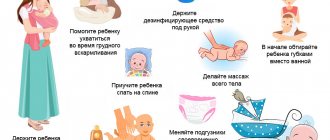Sooner or later, every woman has to face the manifestations of candidiasis. But not everyone knows that if you neglect the treatment of this disease, it can develop into a more intractable form called chronic thrush. This is a recurrent type of candidiasis infection, which bothers with unpleasant symptoms for a long time and can worsen the quality of life of any woman.
Candidiasis infection and its forms
The struggle with constant thrush has tormented many women. However, not all representatives of the fair sex understand what kind of disease they are faced with. Therefore, before understanding the features of the chronic form of the disease and its treatment, it is necessary to understand where the disease comes from and why it begins to recur.
Candidiasis or thrush is a fungal infection of an opportunistic series of diseases that develops due to yeast-like fungi of the genus Candida. The fungus itself is not dangerous and lives on the mucous membranes and skin of 80% of people. There are three main forms of infection with Candida fungus:
- candidiasis;
- acute or primary infection;
- chronic fungus.
Most people are candidate carriers. For them, Candida is an endosymbiont, a microorganism that exists at the expense of the host organism.
Normally, the fungus is involved in some digestive processes, but it itself is not able to multiply and spread. Carriers of the fungus do not get candidiasis, but they can infect others with it. This is how thrush is transmitted between sexual partners, from mother to child, and also through household objects. Candida can also be found on animals and in food.
The acute form of thrush is caused by a sharp activation of the fungus. The development of pathology occurs against the background of a general decrease in immunity and a malfunction of the hormonal system. In a healthy body, they are the ones who inhibit the growth of candida and create conditions for stable vaginal microflora.
Chronic infection usually develops a second time if the first outbreak is not completely cured. For women with reduced immunity and endocrine disorders, this form of thrush can be annoying every month or appears intermittently.
Exacerbations of chronic thrush occur against the background of a decrease in the general resistance of the woman’s body to the fungus. This often occurs during menstruation, and thrush also occurs after menstruation.
Prevention of thrush in men
Thrush or candidiasis (medical term) does not occur as often in the stronger half of humanity as in women, only because the male reproductive system does not have a very suitable environment for the reproduction of the Candida fungus. Having discovered such an unpleasant phenomenon, the male sex cannot even imagine where it all came from. But there are quite a few reasons. For example, prevention of thrush in men, if a woman is sick, is simply necessary, otherwise there will be consequences. Reduced immunity and incorrect medication use may also be to blame, but first things first.
Symptoms of chronic candidiasis
How to distinguish the chronic form from the acute one? You can’t do this without the help of a specialist. If you experience recurrences of thrush more than three times a year, this is a clear sign that it is time to see a specialist.
Women suffering from chronic infection often complain that exacerbation of candida constantly recurs several days before and during menstruation.
Women during pregnancy and breastfeeding are also often susceptible to relapses of vulvovaginal candidiasis.
Symptoms are usually similar to those of ordinary thrush in acute form, which greatly affects the duration of diagnosis and collection of anamnesis and the timeliness of treatment.
The situation can be aggravated by the fact that the body can often produce an absolutely identical range of symptoms in different forms and stages of the disease. So you can’t rely on self-diagnosis.
The main symptom of the disease is frequent thrush in women. Secondary signs may include the following factors:
- discomfort during sexual intercourse;
- the appearance of a foul odor;
- change in the consistency and volume of discharge;
- itching and burning in the external genital area;
- redness and swelling of the vulvar mucosa;
- painful sensations when urinating.
Regardless of the number of coinciding symptoms, do not forget that this is how common candidiasis and other vaginal infections manifest themselves. For this reason, the right decision would be to visit a specialist. The doctor will accurately determine the nature and causes of the disease and prescribe treatment based on the characteristics of your body.
Symptoms of chronic thrush differ from primary infection in the severity of the ailments. Even during periods of exacerbation, the symptoms of the disease are more blurred. This condition creates another danger when other infections develop against the background of thrush.
An unclear symptomatic picture often leads to misconceptions and women miss the development of the inflammatory process. Therefore, you should not try to diagnose thrush and treat it yourself.
If unpleasant symptoms return to you again and again, be sure to visit a gynecologist.
What drugs can be used to treat thrush in women and men at the same time?
When a couple faces a candidiasis problem, the weaker half is usually to blame.
Alas, the female body is more prone to the pathological development of fungus. In representatives of the stronger sex, the disease may not manifest itself, but doctors strongly advise treating thrush in men and women at the same time. Otherwise, the infection will become cyclical: returning from an infected partner to a recovered one. There is no universal therapeutic regimen or cure. They are determined based on the results of examination and questioning of patients, analysis of flora and characteristics of the course of the disease.
Causes of the disease
The development of recurrent thrush often occurs secondary to the acute form of the disease. The reason for the development of the disease may be:
- Incorrect treatment of the primary episode of the disease. This is facilitated by incorrectly designed courses of treatment without supervision and consultation with a specialist, self-medication with traditional methods, and the use of drugs without a gynecologist’s prescription. Women often neglect to consult a doctor, but prefer to buy medications that have already helped them or their loved ones. This approach can lead to the use of incorrect medications and an undertreated fungal infection, which risks degenerating into a chronic form.
- Violation of intimate hygiene rules. Infrequent showering, bathing, or overuse of douching can disrupt the natural balance of microflora, as well as increase the risk of pathogenic infections.
- Allergic reactions that weaken the general and local immunity of the vagina. Allergy triggers in the intimate area are often gels for feminine hygiene, lubricants, pads, tampons and even underwear. Not only can synthetic fabrics cause an allergic reaction, but they also create a damp and cramped environment that is conducive to the development of fungus.
- Incorrectly selected oral contraceptives disrupt the natural hormonal balance, which is important for creating the correct microflora and immune protection of the vagina.
- Changes in hormonal levels in a woman’s body are also a catalyst for the development of various ailments, including recurrent candidiasis. With age, hormonal levels, as well as immunity, undergo changes, making the body more vulnerable to pathogens. The most obvious example is menopause. Natural processes such as pregnancy and menstruation can also cause hormonal imbalances.
- Excess body weight and unbalanced diet. Metabolic disturbances affect hormonal levels and can cause disruption. Diets and fasting are also no less harmful to the body. Lack of important nutrients weakens the immune system's ability to resist various pathogens. Also, excess sweets and fast-carbohydrate foods are a breeding ground for fungal infections.
There is an opinion that internal experiences can provoke a fungal disease. Stress plays an important role in the psychosomatics of thrush in women. It can affect body weight, the body's immune response and hormonal levels, so peace of mind is an important condition for recovery.
Favorable environment for Candida albicans
Chronic candidiasis occurs due to damage to the body by fungi of the genus Candida, which develop protection against the effects of medications and a number of other unfavorable factors. The optimal temperature for candida is 20–27 °C, but they can actively develop at 37 °C. These microorganisms are able to metabolize sugar and for this reason thrush from diabetes is often activated.
Infectious agents can infect organs and tissues if an environment favorable for this is created in the body. When the immune system weakens, thrush is more likely to appear.
The source of infection that provokes the development of chronic candidiasis is most often its own microflora, but infection can also occur from the outside. Having caused a disease, fungi do not change their properties; changes occur in the body itself. By attaching to the cells of the vaginal mucosa, pathogenic microorganisms begin to actively manifest themselves and penetrate into the deeper layers of the epithelium.
In the fight against infection, a certain balance is created. The fungi attempt to penetrate deeper into the tissue, and the body, in turn, tries to reject them, but is unable to do so. As a result, chronic thrush in women lasts for years. The disease either subsides or reappears when the protective functions weaken. Attempts to get rid of thrush forever come down only to suppressing the activity of the pathogen and strengthening the immune system.
Complications of a chronic disease
By neglecting the diagnosis and treatment of chronic thrush, every woman runs the risk of encountering more dangerous complications of the infectious process.
Thrush does not affect the functions of the reproductive organs, so this disease is often taken lightly. However, a frivolous attitude to the treatment of this pathology can lead to more intractable and destructive complications.
Although Candida does not interfere with the functioning of the reproductive organs, the fungus can be dangerous to a woman's health.
Spreading into the vagina, candida loosens and damages the mucous membrane. Damaged mucosa is more vulnerable to microtraumas and cracks, which increases the risk of penetration of dangerous infections from the outside. Inflammatory processes caused by urogenital infections are not uncommon with candidiasis. However, it is more difficult to identify them, since the disease can be masked behind exacerbations of candidiasis.
Statistics show that women with chronic candidiasis are more likely to suffer from infertility and adhesions in the pelvic organs.
Thrush during pregnancy also carries a considerable risk of complications and infection of the fetus with candidiasis.
An effective folk remedy for chronic thrush
Among the folk remedies, the following components are distinguished:
- Soda. For a liter of boiling water - 2 tablespoons of soda. The finished mixture is suitable for daily washing and douching.
- Chamomile. Per liter of boiling water – 2 tablespoons of chamomile. It is necessary to cook the mixture over low heat until it boils, then cover with a lid and let simmer for 10-15 minutes. Next, you need to strain the solution and let it cool.
- Tar soap acts as an antiseptic - it relieves irritation and itching. Birch tar in the composition helps fight inflammation and regenerates the skin.
- Potassium permanganate normalizes the acid-base balance and eliminates some of the symptoms of candidiasis. Before douching, take potassium permanganate 0.1% and add 3 tablespoons to 500 ml of warm water. Stir well and strain the solution to remove any undissolved particles. It is advisable to carry out the procedure in the bathroom and leave the solution in the vagina for 5-10 minutes.
- Drink fresh kefir or wash yourself with it - it improves the acid-base environment.
- Drink fresh carrot juice before every meal to boost your immunity and reduce symptoms.
Diagnosis of candidiasis
What to do with persistent thrush and where to start treatment? The first and true step of any therapy is the correct diagnosis of the disease under the supervision of a specialist.
First of all, it is necessary to collect an anamnesis. The causes of thrush, lifestyle, bad habits, allergies, previous illnesses, previous courses of antibacterial therapy - all this influences which medications should be taken and in what dosages.
The second stage of diagnosis is examination in a gynecological chair. For external manifestations of thrush. Also during the examination, the gynecologist takes a smear for a laboratory study of the vaginal microflora. Culture is necessary for chronic infection to identify the type of fungus and determine the degree of its resistance to antifungal drugs. Less often, additional urine and blood tests are prescribed, as well as an ultrasound of the pelvic organs.
The diagnosis and treatment regimen for thrush will depend on the test results.
Doctors' recommendations for quickly getting rid of thrush
In order to quickly cure thrush, it is necessary, in addition to taking medications, to normalize your diet, eliminating sweet and flour products, and alcohol. Hypothermia and overheating should be avoided. The severity of the disease and how long candidiasis is treated often depends on the woman and her attitude towards her own health.
During the treatment period, you should use pads and underwear made from natural materials, which are changed morning and evening. Even after the disappearance of unpleasant symptoms, the course of treatment should not be interrupted. After complete recovery, you need to visit the gynecologist again and take a second smear, which will show the results of treatment and the state of the vaginal microflora.
Drug treatment for thrush
Treatment of chronic vulvovaginal candidiasis must be carried out using medications prescribed by the attending physician. The specialist determines the duration of the course of therapy and the dosage of medications.
Find out in the article at the link whether you can have sex with thrush and what the consequences may be.
The treatment protocol for thrush in women includes several stages of antifungal therapy:
- Taking a course of antifungal drugs.
- Restoration of the vaginal mucosa and microflora.
- Prevention of relapse of the disease.
To get a quick and lasting effect from treatment, you need to make lifestyle changes. From various recommendations, lists of prescriptions, and reviews, we can highlight the main recommendations for a quick cure for the chronic form of candidiasis:
- reducing sugar levels in the diet;
- healthy sleep;
- giving up alcohol;
- abstinence from sexual intercourse during therapy;
- individual diets;
- general reduction in stress.
When treating candidiasis in women, the selection of drugs and treatment regimens occurs individually, taking into account the patient’s collected medical history. Most often used:
- Tablets - Diflucan, Fluconazole, Flucostat and Nystatin. They have a wide spectrum of antifungal action and are used for vaginal and intestinal candidiasis.
- Ointments for candidiasis - Lomexin, Nystatin, Candida. Medicines effectively treat the symptoms and external manifestations of the fungus and slow down the further spread of the disease.
- Vaginal suppositories - Pimafucin, Macmiror, Clotrimazole. Preparations for topical use allow you to actively influence the source of vaginal infection.
To restore the vaginal mucosa, ointments and suppositories with regenerating and anti-inflammatory properties are used. And products with lacto- and bifidobacteria help restore the microflora.
Quick and effective treatment of chronic thrush requires an integrated approach. It is impossible to cure persistent thrush once and for all, solely with the help of medications alone, without eliminating the root cause of the disease.
Fighting resistant candidiasis: methods of modern medicine
Doctors treat pathology with antifungal capsules and suppositories. Such medications are very effective in destroying parasite colonies. The most common oral medications for candidiasis are:
- Diflucan. The medicine is available in gelatin capsules. Once in the gastrointestinal tract, Diflucan is quickly absorbed and enters the blood. This substance destroys many strains of fungi, but not all. Before prescribing the drug, a competent doctor conducts a test of parasites for sensitivity to it. If indicated, a woman suffering from a stable form of pathology is prescribed to take one capsule (150 mg) per day for several days. The duration of treatment may vary in each individual case.
- Fluconazole. This is an analogue of Diflucan: the medicine has almost the same composition. Fluconazole differs from Diflucan in a more affordable price. One day after administration, the concentration of the drug in the blood becomes maximum, so its therapeutic effect is felt only the next day after the start of treatment. Fluconazole is excreted from the body in the urine.
- Nystatin. This medicine has been used to treat fungal infections for decades. However, its spectrum of action is too narrow to combat protracted thrush, so today Nystatin is prescribed extremely rarely.
In addition to oral medications, for vaginal mycosis that occurs over a long period of time, doctors prescribe vaginal suppositories. There are many varieties of such suppositories, each of which is capable of destroying different types of microspores, cryptococci or coccidia:
- Clotrimazole. These suppositories effectively destroy the disease caused by fungi of the genus Candida. They act locally, so the symptoms of candidiasis disappear within a few hours after administration of the suppository. The duration of the therapeutic course with this remedy is about 6 days.
- Livarol. Candles destroy not only yeast, but also dermatophyte fungi. Livarol also has an antimicrobial effect: it destroys staphylococci and streptococci. It is this medicine that is often prescribed when the question arises of how to cure chronic thrush in a week.
- Macroworld. Suppositories contain nystatin and nifuratel, which fight yeast and bacterial infections at the same time. They are effective against persistent pathology that develops against the background of sexually transmitted diseases. The course of treatment with the drug is 8 days.
- Pimafucin. Suppositories that are active against yeast fungi. If a chronic disease is caused by these microorganisms, after a course of treatment with suppositories (6 days) the disease will recede.
- Zalain. This substance has a powerful antifungal effect, due to which it quickly destroys colonies of Candida microspores. However, it does not work against other strains, so it cannot always cope with protracted pathology. The course of treatment with Zalain is usually 7 days.
- Terzhinan. The product effectively destroys fungi and bacteria, relieves the symptoms of thrush - burning in the vaginal area, swelling of the mucous membrane, cheesy discharge. It is prescribed in particularly difficult cases. Treatment with suppositories lasts about 10 days.
Modern medicine does not deny the advisability of using traditional methods, the most famous of which are douching with herbal decoctions. For example, traditional medicine has long treated candidiasis of various forms using decoctions of oak bark, celandine, an aqueous solution of alcoholic tincture of propolis, and garlic water. Such methods may well be part of the treatment regimen for the disease, since they help to quickly eliminate the symptoms of fungal infection. The duration of use of traditional methods can only be determined by a gynecologist.
Many doctors prefer medicinal baths to douching: with this method of using herbal decoctions and infusions, the risk of introducing an infection deeper inside the body is significantly reduced.
A new form of turning to traditional medicine in the treatment of vaginal candidiasis are medicinal tampons soaked in herbal decoctions: they are easy to use and quite safe.
All the remedies described above help cleanse the body of parasites, but they are not able to completely solve the problem of how to treat chronic thrush so that it never returns.
The next step in the fight against chronic candidiasis is to prescribe the woman medications and procedures that will help her organs restore functionality.
Prevention of fungal disease
Following preventive measures will help you get rid of chronic thrush for a long time:
- compliance with personal hygiene rules;
- avoiding douching;
- carrying out antibacterial therapy only in conjunction with taking probiotics;
- proper nutrition and the absence of excess sweets and yeast in the diet;
- moderate physical activity.
For recurrent infections, drug therapy is also carried out. This is a necessary measure for immunodeficiency conditions and disorders of the endocrine system. Such prophylaxis may be required before childbirth to avoid infecting the baby.
Chronic candidiasis does not mean that you will have to live with this disease all your life. However, this disease is not treated as quickly and easily as patients would like. In order not to delay the healing process, be sure to carry out the therapy prescribed by your gynecologist. Also, do not neglect the prevention of relapse of the disease. This is the only way you will achieve long-term remission and forget about the unpleasant manifestations of thrush.
How does constant chronic thrush differ from regular thrush?
Ordinary thrush is easily treated - just 2 tablets of fluconazole, 3 days apart, are enough to forget about the existence of the disease. Chronic treatment is long and difficult - about 2-4 weeks with the help of cream, tablets, suppositories, diet and intimate hygiene gel with an antifungal component.
Chronic candidiasis is dangerous due to relapses - at least 2 episodes per year. As a rule, they occur in cold weather, when the immune system is weakened and a cold appears.
If ordinary thrush can go away on its own, for example, after strengthening the immune system, then chronic thrush can subside for a while, and then begin again with renewed vigor.
Candidiasis is dangerous and needs to be treated on time!










